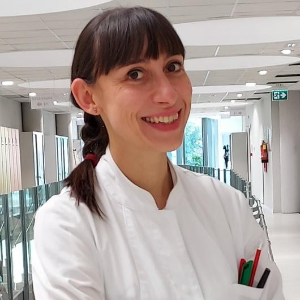Title : Cell-free supernatants of Lactobacillus johnsonii LJO02 inhibit the growth and virulence of pathogenic methicillin (oxacillin)-resistant Staphylococcus aureus
Abstract:
The rapid spread of multidrug-resistant (MDR) bacteria, such as the skin commensal Staphylococcus aureus which could behave as an opportunistic pathogen, is a global health challenge. Therefore, new methods to limit the over-colonization and virulence of opportunistic pathogenic biotypes are highly urgent. Recently, cell-free supernatants (CFSs) from lactic acid bacteria (LAB) cultures have been exhibiting the ability to reduce the virulence of different pathogenic species, including S. aureus. We characterized and compared the activity of Lacticaseibacillus rhamnosus LR06 and Lactobacillus johnsonii LJO02 (DSM 21981 and DSM 33828, respectively; Probiotical Research Srl) CFSs, produced in the conventional animal-based De man, Rogosa and Sharpe (MRS) medium and in an innovative totally animalfree broth (TIL) versus the methicillin (oxacillin)-resistant S. aureus strain (MRSA; ATCC 43300). CFSs were analysed via high-resolution mass spectrometry and gas-chromatography for short chain fatty acids (SCFAs), lactic acid and protein composition, while their activity was assessed towards i) the viability and metabolic activity of the MRSA strain through optical density and alamarBlue assay, and ii) the capability to inhibit/disaggregate the pathogenic biofilm, via crystal violet staining. All the CFSs reduce the viability and metabolic activity of S. aureus. The animal-free TIL medium demonstrates to be more efficient respect to MRS in stimulating LAB metabolism and in reducing the biofilm form, a virulent feature of the pathogen. CFSs from LJO02 produced in TIL are the best, thanks to their specific SCFAs and protein metabolites composition. In conclusion, antagonistic non-pathogenic CFSs represent a promising and strategic approach, with potential applications as bacteriotherapy and bioremediation of hospital equipment surfaces. The deeper elucidation of the molecular basis associated with their anti-pathogenic potential could represent a novel and effective prevention and treatment measure for MRSA. This is the first investigation showing that an animal-free medium can stimulate, to a greater extent than a conventional animal-based medium, the production of CFSs able to counteract opportunistic S. aureus over-colonization and virulence, through specific SCFAs, lactic acid and protein regulators.




